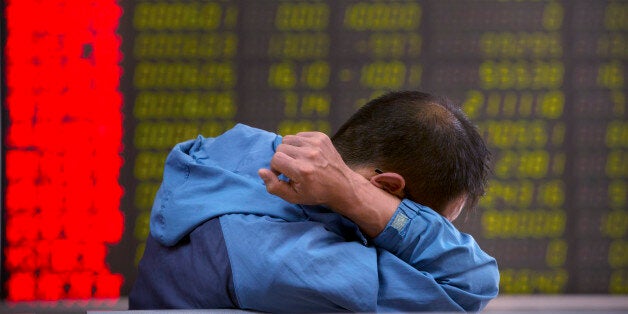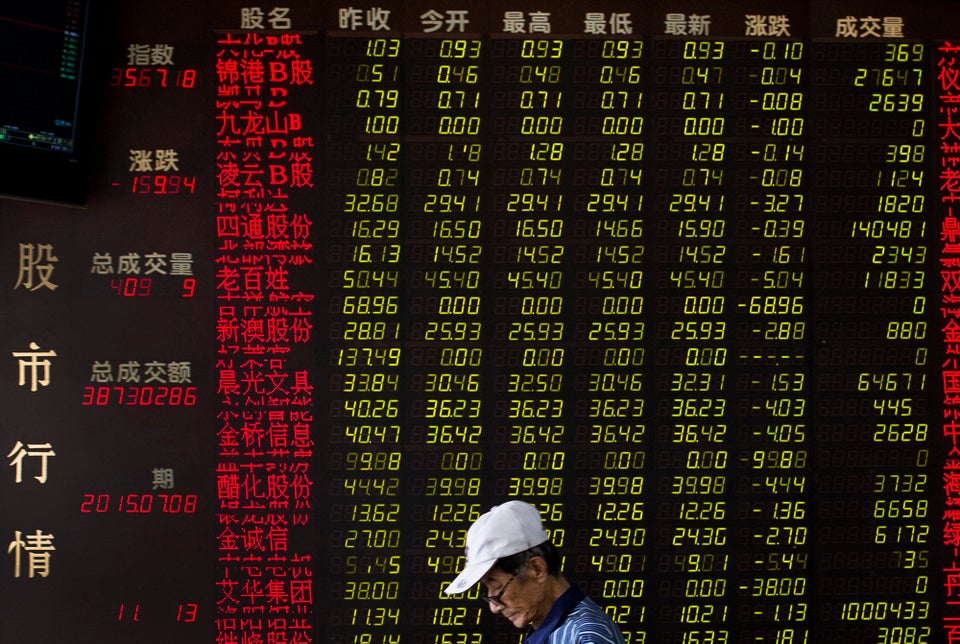
MILAN, Italy -- Markets plunged again this week, a mini quake with the apparent epicenter in China. The question on the minds of economic policy makers and investors is what is going on and what will the future hold?
It would be tempting to attribute all of this to fears of faltering growth and imbalances in the Chinese economy. But that can't be right. The Chinese economy, at roughly three quarters the size of America's and Europe's, is systemically important. But even an extreme slowdown in China would not derail the whole global economy.
The overriding context appears to be extreme uncertainty about the causes and consequences of these moves, leading to very high volatility.
It seems natural to ask whether the perceived trajectory of the global economy has shifted downward as much as the movements in the equity markets might seem to suggest. The answer seems clearly to be no.
The major parts of the global economy are struggling, but the paths seem pretty clear. The U.S. has settled into about 2 percent growth. Adverse conditions outside could slow it down, along with a further appreciation of the dollar. Maybe the current turmoil will cause the Fed to further delay its interest rate increase. Europe is growing slowly and has not yet returned to pre-crisis levels for GDP, let alone employment. Japan is also below pre-crisis GDP levels. Major emerging economies have struggled with policy missteps and inaction along with a huge downward reset in commodity prices.
Admittedly the picture is not pretty. But not that much appears to have changed, with the possible exception of growth or stability in China. It seems unlikely that falling equity prices will derail the growth patterns just described by some unspecified transmission mechanism.
Admittedly the picture is not pretty. But not that much appears to have changed.
Certainly a larger than expected slowdown in China is not good for any country or market. And conversely, the very low growth of China's major external markets has made the export sector a weaker engine of growth than it was previously and has hence put pressure on the domestic market to supply the enabling demand.
So what are the principal concerns relating to market movements and economic performance?
One is the level and rate of increase of debt in the Chinese economy in the post-crisis period. The burden of that debt depends critically on growth. Hence, the concern about a major slowdown.
A second concern has to do with mixed signals coming from clumsy policy choices and reversals. The stock market bubble in China was in part fueled by retail investors buying on margin -- an unwise policy choice to stimulate domestic demand and counter the drag from the housing market. The response after the bubble burst was even more problematic.
Relatedly, observers worry policy makers in China do not believe their own growth program, which includes making markets decisive, except perhaps when the market results are inconvenient.
The devaluation of the renminbi engineered by the PBOC (the Chinese Central Bank) was probably the right thing to do. The RMB has been appreciating along with the dollar and appeared to be increasingly overvalued in the past year. However, the devaluation and the apparent shift in the currency regime came as a surprise and were widely interpreted as a signal that there was a larger growth problem than had been appreciated, especially in the tradable sector.
Unrealistic expectations of Chinese and global growth in part led to overvaluations of a wide range of commodities. These valuations are resetting downward, producing distress in commodities businesses and head winds for commodity exporters.
More broadly, pretty much universal accommodative monetary policy, whatever its merits and risks, had its intended effect of pushing capital into risk assets. The result was an extended period of divergence between equity market performance and underlying economic fundamentals (growth, employment and real investment). Most people agree that this divergence pattern could not go on indefinitely, even if there was a semi-permanent decline in the discount rate.
There are two ways this divergence pattern could end. Economic growth could rise over time to validate the elevated valuations. Or asset prices could reset downward to bring them in line with the modest rate of growth that appears to be with us. It now seems the second is the more likely outcome.
The stock markets in China are volatile and probably not yet a realistic gauge of economic conditions.
The stock markets in China are volatile and probably not yet a realistic gauge of economic conditions. The Shanghai index peaked in a bubble in 2007 at just over 6000, and then spent the better part of the post-crisis period in the 2000-3000 range, even as the economy grew. Then the current bubble took off and burst. The institutional investor base is still relatively underdeveloped. Retail investors have undue influence, especially when armed with leverage. Large blocks of stock in state-owned enterprises don't trade as they are held by government entities.
On balance, it seems to me best to think of the current volatility as structural in character, sending extreme and misleading signals about the economy. The latter certainly has challenges. But as the domestic service sector develops, there are signs that the structural evolution of the economy, while bumpy, is moving in the right direction. Growth could surely slow below the current targets of 6-7 percent. That would not be fatal unless unwise and unsustainable measures are taken to prevent it. A big increment in leverage would be an example of the latter.
As for the markets, experts in market behavior generally expect movements like those we have seen to overshoot before the value investors are attracted in to stabilize the markets. If the Shanghai composite index gets to 2,500, the price-earnings ratios and valuations will surely look attractive for the longer-term investor.
Earlier on WorldPost:

